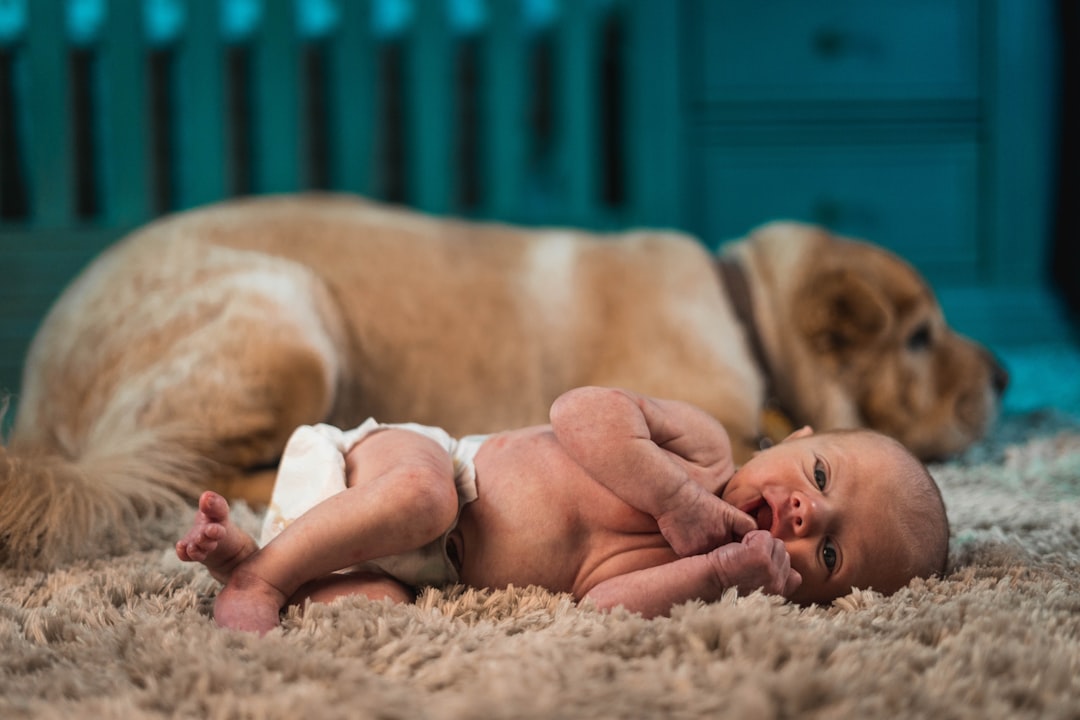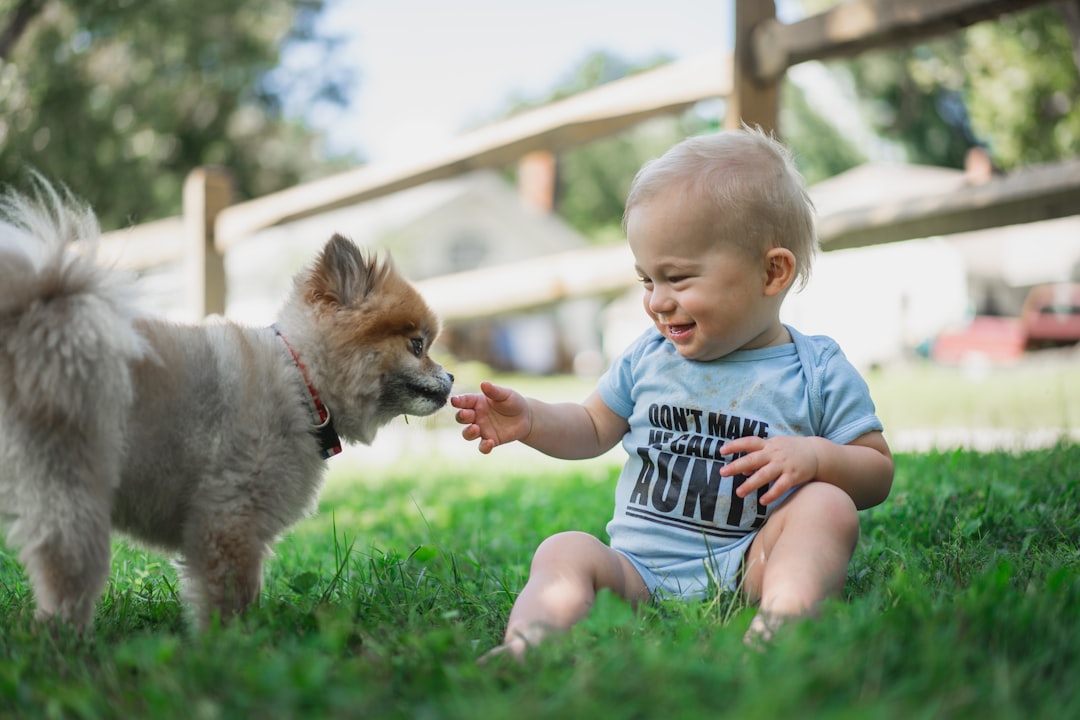- You are here:
- Home »
- Blog »
- Boston Dog Trainer »
- Integrating Your Dog and New Baby: A Guide to a Harmonious Relationship
Integrating Your Dog and New Baby: A Guide to a Harmonious Relationship
Integrating Your Dog and New Baby: A Guide to a Harmonious Relationship
Gradually Introducing Your Dog to a New Baby: This article provides strategies and tips for smoothly integrating a new baby into a household with a dog, emphasizing the importance of understanding your dogs needs, preparing before the baby arrives, and building a safe and positive relationship between the dog and the baby.
Introduction: Importance of a Smooth Transition
Introducing a new baby to your household with a dog is a significant event that requires careful planning and consideration to ensure a smooth adjustment for everyone involved. Dogs, as creatures of habit, thrive on routine and predictability, so the arrival of a newborn can be a major disruption to their daily lives. Understanding the potential stressors that can affect your dog, such as changes in their schedule, noise levels, and attention distribution, is crucial in preparing them for the new family dynamic.
For example, to help your dog acclimate to the upcoming changes, you can gradually introduce them to baby-related sounds like crying or cooing. This exposure can desensitize them to these noises, making them less alarming when the baby arrives. Additionally, creating a positive association by rewarding your dog’s calm behavior around baby items, such as cribs or toys, can help them build positive connections with the new family member even before the baby’s arrival. These proactive steps can contribute to a smoother transition and reduce the likelihood of stress-related behaviors in your dog.
Moreover, fostering a positive relationship between your dog and the baby is not only beneficial for their emotional well-being but also for the safety of both. By prioritizing supervised interactions and setting clear boundaries from the beginning, you can create a secure environment where both your dog and baby can thrive. Remaining patient, calm, and consistent in your approach will go a long way in establishing a strong foundation for a harmonious coexistence between your furry and human family members [3].
Understanding Your Dog’s Needs
Understanding your dog’s needs during the transition period of introducing a new baby is essential for a harmonious family dynamic. Providing your dog with a safe space where they can retreat and relax is not only beneficial for their well-being but also aids in their adjustment to the new family structure. For example, setting up a cozy corner with their bed or crate in a quiet area can give them a sense of security amidst the changes happening in the household.
Moreover, implementing a structured routine that involves the dog in baby-related activities can make them feel included and prevent feelings of exclusion, [4]. Dogs thrive on predictability, and involving them in activities like baby’s playtime or walks can help them understand the new family dynamics. This inclusion can strengthen the bond between the dog and the family, making them feel like an integral part of the changes taking place. Additionally, recognizing behavioral cues that indicate anxiety in dogs, such as excessive licking or restlessness, is crucial. By identifying these signs early on, pet parents can address their dog’s emotional needs promptly, ensuring a smoother transition for everyone involved.
 Preparing Before the Baby Arrives
Preparing Before the Baby Arrives
To prepare your dog for the arrival of a new baby, consider gradually exposing them to baby-related sounds and items. For example, playing recordings of baby noises or allowing your dog to sniff baby diapers can help desensitize them to these new stimuli, [4]. This exposure can help your dog become familiar with the upcoming changes and reduce their anxiety when the baby arrives. Additionally, creating positive associations by rewarding your dog’s calm behavior around baby-related objects is crucial. You can offer treats or praise when your dog displays relaxed behavior near baby items, reinforcing a positive connection with these new elements. [4].
Moreover, seeking professional advice on dog behavior and training can be beneficial in preparing your furry friend for the new family member. Professional trainers can offer guidance on how to address any specific concerns or behavior issues your dog may have during the transition period. They can provide personalized strategies to help your dog adjust to the upcoming changes and ensure a smooth introduction to the baby. Remember, each dog is unique, and professional advice can offer tailored solutions to make the process easier for both your dog and your family.
 The First Introduction
The First Introduction
When introducing your dog to your new baby for the first time, consider starting in a neutral space within your home to avoid triggering territorial behavior from either your pet or the newborn. This neutral territory can help create a more relaxed environment for the initial interaction, allowing both the dog and the baby to feel more at ease. For example, you can introduce them in a room where your dog doesn’t spend much time or in the living room with baby gates to ensure safety and a stress-free atmosphere.
It is essential to supervise all interactions between your dog and the new baby diligently. This close supervision is crucial to guarantee the safety and well-being of both your pet and your newborn. By being present and attentive during their first encounters, you can intervene if necessary and prevent any unwanted behavior or accidents. Additionally, keeping a watchful eye on your dog’s body language during the introduction can provide valuable insights into their comfort level and emotional state. Understanding your dog’s signals can help guide the interaction positively and address any signs of stress or discomfort promptly, [5].
As your dog and baby begin to interact, observe how your pet responds to the new family member. Look for signs of curiosity, calmness, or stress in your dog’s body language, such as wagging tails, relaxed posture, or avoidance behaviors. By being attentive to these cues, you can better understand how your dog is adapting to the new addition to your family and adjust the introduction process accordingly. Remember, every dog is different, so being patient and responsive to your pet’s needs is key to fostering a harmonious relationship between your dog and your baby.
Building a Safe Relationship
To build a safe and harmonious relationship between your dog and the new baby, it is essential to provide the dog with interactive toys and mental stimulation. By engaging your dog in activities that challenge their mind and keep them entertained, you can prevent boredom and potential behavioral issues that may arise from feeling neglected or under-stimulated, [5]. For example, puzzle toys that dispense treats when solved can keep your dog mentally engaged while also rewarding them for their efforts, promoting a positive and fulfilling experience for your pet.
Establishing clear boundaries and rules from the beginning is crucial in preventing conflicts between your dog and the baby as they navigate their interactions. Setting guidelines for appropriate behavior around the baby, such as not jumping up or taking food from the baby’s hands, can help your dog understand their role in the new family dynamic. Consistency in enforcing these boundaries will provide your dog with a sense of structure and predictability, reducing any potential confusion or stress they may experience during the adjustment period.
Moreover, socializing your dog with children of different ages and temperaments can significantly contribute to their comfort and adaptability around the new baby. Exposing your dog to various scenarios where they interact with children can help them build confidence and learn how to behave appropriately in different situations. For instance, arranging playdates with friends or family members who have children can offer valuable opportunities for your dog to practice socializing and understanding the cues and behaviors of young individuals, preparing them for interactions with the newborn.
Enhancing the Bond Between Dog and Baby
When introducing a new baby to a dog, it is crucial to allow the dog to approach the baby at their own pace. For example, if the dog seems hesitant or unsure, giving them the freedom to investigate the baby gradually can help alleviate any anxiety they may be feeling. By respecting the dog’s comfort level and boundaries, you are laying the groundwork for a trusting and positive relationship between the dog and the baby. Additionally, observing the dog’s body language during these initial interactions is key in understanding their emotions and adjusting the introduction process accordingly. Signs of tail wagging, relaxed body posture, or curiosity indicate that the dog is likely feeling comfortable and receptive to the new family member.
Moreover, teaching the baby to respect the dog’s space and boundaries is equally important. For instance, encouraging gentle petting and interaction with the dog while also establishing areas where the dog can retreat when they need space can help create a harmonious environment. By instilling a sense of mutual respect early on, both the dog and the baby can coexist peacefully and develop a bond built on trust and understanding. Regular, brief positive interactions between the dog and the baby throughout the day, such as supervised play sessions, can further solidify their relationship and reinforce positive associations. These interactions not only strengthen the bond between the dog and the baby but also contribute to a sense of companionship and security for both parties involved.
 Conclusion: Strategies for Successful Integration
Conclusion: Strategies for Successful Integration
Consistent training and positive reinforcement techniques are fundamental in helping the dog adapt to the new family dynamics when a baby arrives. For instance, using treats to reward calm behavior around the baby or engaging in short, positive interactions throughout the day can create a positive association for the dog with the newborn. This approach not only helps the dog adjust but also strengthens the bond between the pet and the new family member over time, leading to a harmonious relationship.
Moreover, safety and supervision are key elements in ensuring a successful integration between the dog and the baby. By closely monitoring all interactions and taking necessary precautions, such as setting up safety gates or creating designated dog-free zones, potential risks can be minimized, promoting a secure environment for both the dog and the newborn. Additionally, establishing a predictable routine that includes quality time for both the dog and the baby can contribute to a sense of stability and security for all family members, fostering a nurturing and loving atmosphere within the household.
